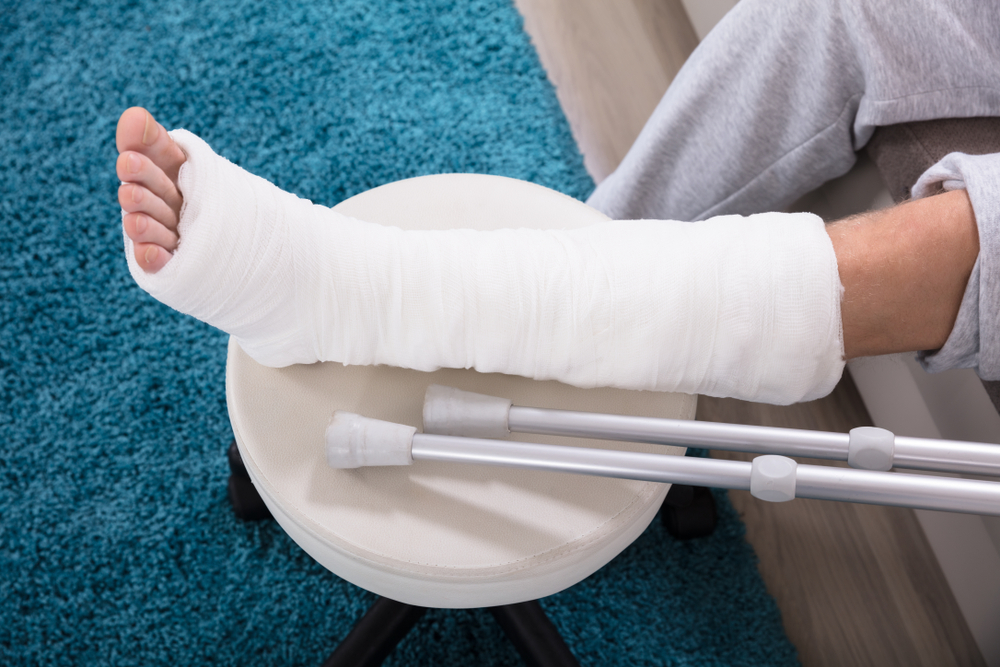Not all bone fractures are the same. Discover the different types of fractures to determine the right treatment program for you.
A broken bone is a serious orthopedic injury that requires immediate medical attention. Unlike muscles and ligaments, bones are stiff, making them vulnerable to fractures from accidents or sports injuries. Bones may also crack from everyday activities if you suffer from a bone-thinning condition like osteoporosis.
Although a bone break is typically accompanied by pain, swelling, and bruising, each type of fracture has different characteristics and therefore requires different treatment. An orthopedist can X-ray your injury to determine which type of fracture you’ve suffered. Once you know the nature of your fracture, you’ll begin a recovery program tailored to you.
Types of Bone Fractures
To classify your bone fracture, your doctor will see where the bone has been broken and the shape or pattern of the break. A bone fracture can take several different forms, which will ultimately dictate your treatment. Here are some of the most common:
- Open Fracture. In this injury, the bone breaks through the skin, causing a severe wound. Also called a compound fracture, an open fracture should be tended to immediately to prevent infection.
- Stress Fracture. Stress fractures look like a hairline crack in the bone and can be hard to see on a regular X-ray. Runners are prone to stress fractures because of the repetitive motion of hitting the pavement.
- Greenstick Fracture. In a greenstick fracture, the bone bends and breaks, but remains in one piece. This is often seen in children due to their softer, more flexible bones.
- Transverse Fracture. A transverse fracture is characterized by a horizontal break across the bone. It is often the result of a traumatic event like a car accident.
- Oblique Fracture. In an oblique fracture, the break has a curved or angled pattern within the bone.
- Comminuted Fracture. When the bone shatters into three or more pieces it’s known as a comminuted fracture. Sometimes, bone fragments break away and embed in the site of the fracture. High-impact trauma such as a car accident typically causes a comminuted fracture.
- Linear Fracture. Instead of a horizontal break across the bone, a linear fracture is vertical and parallel to the sides of the bone.
- Compression Fracture. Compression fractures are the result of a crushing of the bone. This type of fracture typically occurs in the spine when the vertebrae collapse because of bone loss due to osteoporosis.
- Displaced Fracture. In most fractures, the bone breaks but remains in alignment. With a displaced fracture, the bone breaks in two or more pieces and is shifted out of alignment due to the force of the trauma.
- Spiral Fracture. The defining characteristic of a spiral fracture is a break that spirals around the bone. It’s frequently seen in the long bones of the body, such as the femur, tibia, or fibula in the legs. The most common causes of a spiral fracture are accidents or sports injuries.
Treating Bone Fractures
Bone fractures typically respond well to non-surgical treatments. After a break, bone cells form around the fracture. As these cells multiply, the fracture is eventually repaired. To aid in that healing process, your leg, arm, or other body part will be placed in a cast after the bones have been aligned so the two ends can connect once again. For some fractures, you may be able to wear a functional cast or brace that allows some movement of the joints.
Casts may not be appropriate for all fractures, however. In some instances, traction may be needed to put the bone back into alignment. This is done either by tape adhered to the skin below the fracture or a pin inserted through the bone. Weights are applied to the pin as the patient is placed in an apparatus to encourage traction.
If surgery is required, a surgeon will place screws or metal pins above and below the fracture that are then attached to a metal bar outside the skin. That’s known as external fixation. In an internal fixation, the broken bone is positioned back into its normal alignment and held together with screws or metal plates secured near the bone’s surface.
You can expect a recovery period of several weeks or months. After the bone has healed, you’ll slowly return to normal activities as your bone becomes accustomed to the stress. It’s recommended that you undergo rehabilitation to strengthen your muscles, as well.
The doctors, surgeons, physical therapists at New York Bone & Joint Specialists have helped thousands of patients heal their bone fractures (and other orthopedic injuries) and return to an active lifestyle. Contact us today for a consultation.




